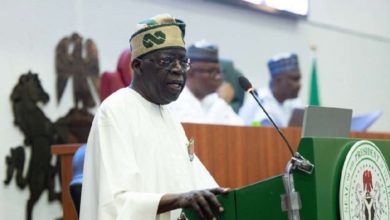Overview of the Nigerian Pension System

By Dr. Farouk Aminu
Head, Research & Strategy Management Department
National Pension Commission
Definitions
What is Pension?
Pension is an arrangement to provide people with an income when they are no longer earning a regular income from a gainful employment
Pension is different from severance pay or gratuity.
It is paid in regular installments, while severance pay and gratuity are paid in one lump sum.
Defined Benefits (DB) – guarantees a certain payout at retirement according to a fixed formula. Example, Nigeria’s Pay-As-You-Go Scheme
Defined Contribution (DC) – provides a payout at retirement that is dependent upon the amount of money contributed and the return on investment
Type
Social and State Pensions – provided by government for its citizens. Typically depends on social insurance contributions.
Employment Based Pensions – may be provided by an employer or both employer and employee contribute certain amounts to a fund in order to receive benefits in retirement
Disability Pensions – some pension plans provide benefits in case a plan member suffers disability
Nigerian Pension System
Defined Benefits
Defined Contribution – CPS
Pension Reform Act 2014 signed into Law
Pension Schemes Pre 2004
Public Sector Schemes 1951
The first public sector pension scheme was the pension ordinance of 1951
Retroactive effect from January 1, 1946
Provided public servants with both pension and gratuity 1979
Pensions Decrees 102 and 103 (for the Military) of 1979 were enacted
Retroactive effect from April 1974
Beneficiaries were qualified for pension and gratuity after 15 years and 10 years of service respectively
Issuance of Circular in 1992 changing the qualifying ages to 10 and 5 years for pension and gratuity
Parastatals were allowed to have individual pension arrangements in 1997
Unified Pension Schemes
Allowed to appoint Boards of Trustees to administer their pension plans
Plans operated as specified in a Standard Trust Deed and Rules prepared by the Office of the Head of Service of the Federation.
Private sector pension scheme in Nigeria 1954
First Scheme was for the employees of the Nigerian Breweries in 1954
Second Scheme was by United African Company (UAC) in 1957
Establishment of National Provident Fund (NPF)
National Provident Fund (NPF) was the first formal social protection scheme in Nigeria established in 1961 for the private sector employees following an ILO Standard
NPF was contributory and both employee and employer contributed and benefits were only one-off lump sum payments
The Nigeria Social Insurance Trust Fund (NSITF) was established by Decree No. 73 of 1993 to provide enhanced social protection to private sector employees
The NSITF took over the assets of the NPF and commenced operations in July 1994
All registered members of the NPF became automatic members of the NSITF
Similarly, all private sector employers and employees were mandated to register as members as soon as they assumed duty.
Reform Efforts
Various attempts to reform the Pension System
1999
Bureau for Public Enterprises (BPE) was tasked to privatize public enterprises
Realized the impossibility to privatize such companies due to their huge pension liabilities amounting to about $3.2 billion
2000
The BPE drew the attention of Government on this liability and that of the public sector estimated at about $6.4 billion
The Government set up the Ogunsola Committee to look into the challenges of pension schemes and proffer solutions
2003
Government set up the Fola Adeola Committee (FAC) to collate all previous efforts made on pension reforms
The FAC recommended in its report, the establishment of a Contributory Pension Scheme to cover both public and private sector employees
The FAC also drafted the Bill that established both the Contributory Pension Scheme and the National Pension Commission.
Features of the Scheme
Contributory
Mandatory
Both employer & employee to contribute
Minimum of 8% and 10% by employee and employer respectively
Fully Funded
From onset, fund is set aside to fully meet future retirement liabilities
Individual Retirement Savings Accounts (RSAs)
Personalized & portable
Privately managed
PFAs , CPFAs, PFCs
Why private management?
Group life insurance cover
3 times employee’s emoluments
Premium paid by employer
Death cases only
Strictly regulated
Regulation and supervision of pension administration is consolidated under one Regulator.
Safeguards of the Scheme
Ring fencing through the separation of custody from administration of pension assets
Meticulous investment limits & risk rating
Segregation of Pension Funds from assets of operators
Daily monitoring of investment of pension funds
Guarantee from the parent company of PFCs and mandatory statutory reserve requirements for PFAs
Pension funds not to be applied as loans or collateral for loans
Fit and Proper Persons requirements for pension funds management
Strict corporate governance and disclosure requirements.
Institutional Framework
Legal Framework
Coverage
States & Local Government Employees. Section 1
Private Sector Organizations with 3 or more employees (S.2)
Minimum Contribution Rate:18% of monthly emolument [S.4(1)]
Employer may agree to pay employee Additional Benefits upon retirement [S.4(4)(a)]
Access to Retirement Benefits
Programmed Withdrawal & Annuity maintained
Employees entitled under their conditions of service to retire with 100% replacement ratio can do so
Persons who loss their jobs and could not secure employment within 4 months can access up to 25% of RSA balance.
Registration and Funding
Employers mandated to request PFA to open Nominal RSA for employees that fail to register within 6 months of employment
OAGF & FCT Treasury to make deductions & remit pension contributions to FGN and FCT employees respectively
DMO given statutory responsibility to issue Retirement Benefit Bonds recognizing accrued pension rights.
Budget Office given statutory responsibility to ensure funding of RBBRF Account and pension review on Accrued Rights portion in line with S.173(3) of the Constitution.
Pension Transitional Arrangement Directorate (PTAD)
Federal PTAD established as an Extra Ministerial Department under Federal Ministry of Finance
PTAD to be headed by an Executive Secretary
PTAD Management Team to be appointed by Minister – with Representatives of Pension Departments
FCT PTAD also established and an Executive Secretary to be appointed by FCT Minister
Both PTADs strictly under Regulation & Supervision of PenCom
PTADs to prepare Payroll for DIRECT PAYMENT to PENSIONERS’ BANK ACCOUNTS by OAGF out of budgetary allocation kept with CBN
Insured Pension Schemes for Parastatals abolished – PTAD to takeover functions.
Pension Protection Fund (PPF)
To be funded by:
Annual Subvention of 1% of monthly wage of FGN employees
Annual Levy on PenCom and Pension Operators
Income from investment of the fund
Utilization of PPF
Funding of Minimum Pension Guarantee (MPG)
Compensation for shortfall or financial losses from investment activities
Any other eligible purpose
RSA Balance to secure Residential Mortgage: Subject to Guidelines – a percentage of RSA balance may be applied for payment of Equity Contribution for residential mortgage
Pension Fund Investment Income now tax exempt.
Conflict of interest issues now strictly sanctioned
Board of the Commission was expanded to include Trade Union Congress, Nigeria Stock Exchange and National Insurance Commission
The Board reports directly to the President of the Federal Republic of Nigeria
External Auditors of PFAs & PFCs under obligation to report specific problems to the Commission
Comprehensive regime of sanctions.
CPS at a Glance
Initially licensed 26 PFAs, 7 CPFAs and 5 PFCs
Presently reduced to 21 PFAs, 7 CPFAs and 4 PFCs due to mergers and acquisitions
Number of registered contributors was 8.14 million as at June, 2018
Public Sector – 43.67% Private Sector – 56.33%
27 States of the Federation had adopted the scheme and are at different stages of implementation and the FCT , 8 States are at bill stage while 1 is yet to commence the process of implementation.
Over 200,000 private sector employers of labour are implementing the CPS
Total pension fund assets had grown to N8.23 trillion.
239,889 retirees are currently receiving pensions as and when due under the CPS
Programmed Withdrawal: 185,418 retirees received N 478.15 billion as lump sum and N6.31 billion as average monthly pensions
Annuity: 54,471 retirees were paid N66.46 billion as lump sum; N273.92 billion as premium that provides an average monthly pension of N2.84 billion
Impact of the CPS on the Nigerian Economy
The CPS has facilitated the development of:
Corporate bond market
Insurance market
Group Life Insurance
Life Annuities
Alternative asset classes
Infrastructure Bonds
Infrastructure Funds
Private Equities
Supranational Bonds
Mortgage market
Nigeria Mortgage Refinancing Company’s N50 billion bond
Section 89(2) of the PRA 2014 provides for a portion of the pension funds in an RSA to be utilized as equity contribution for payment of residential mortgage
Guidelines have been exposed to stakeholders for inputs prior to issuance
Corporate governance in companies where pension funds have been invested
Rating Agencies.
Multi-Fund Structure for RSA Funds:
Objectives of the RSA Multi-fund Structure include:
Achieve optimum returns for contributors by aligning their pension savings with their individual risk/return profiles.
Provide investment portfolio choices to Contributors.
Enhance safety of pension assets through adequate portfolio diversification, through increased investment in equities and alternative assets such as infrastructure and private equity.
Effective date: Monday, 2 July, 2018.
Stratified as follows:
Fund I: Below 50 years (By choice)
Fund II: Below 50 years (Default Fund)
Fund III: For Pre-Retirees (50 years and above)
Fund IV: For Retirees only.
Investment Limits of the RSA Multi-Fund Structure:
No policy document on ESG Principles to be mainstreamed in the investment Regulations to guide operators & for PenCom as a Corporate
Industry through the window of FGN securities invested N7.19 billion or 70%. Of the FGN of its 1st N10.69 billion 5-Year Sovereign Green Bond in December 2017 to fund some environmentally friendly renewable energy projects
No efforts for the integration of ESG factors into investment decisions of Nigerian pension funds, particularly at policy level and capacity building.
Micro Pension Plan
Draft Guidelines and Framework approved
Investment Guidelines for Micro Pension Plan developed
Working on ICT infrastructure to support Plan implementation
Plan to Commence in January 2019
Development of Enhanced Contributor Registration System (ECRS)
To accommodate additional registration fields
To incorporate the minimum demographic and biometric requirements for the unique identification of an individual on the National Identity Database (NID), maintained by the National Identity Management Commission (NIMC)
To resolve Issues of multiple registration
To enable transfer window
Currently at the testing phase prior to deployment.
A paper presented at the 2018 Annual Media Retreat organised by Pension Operators of Nigeria (PenOP) for insurance and Pension journalists in Lagos recently.





